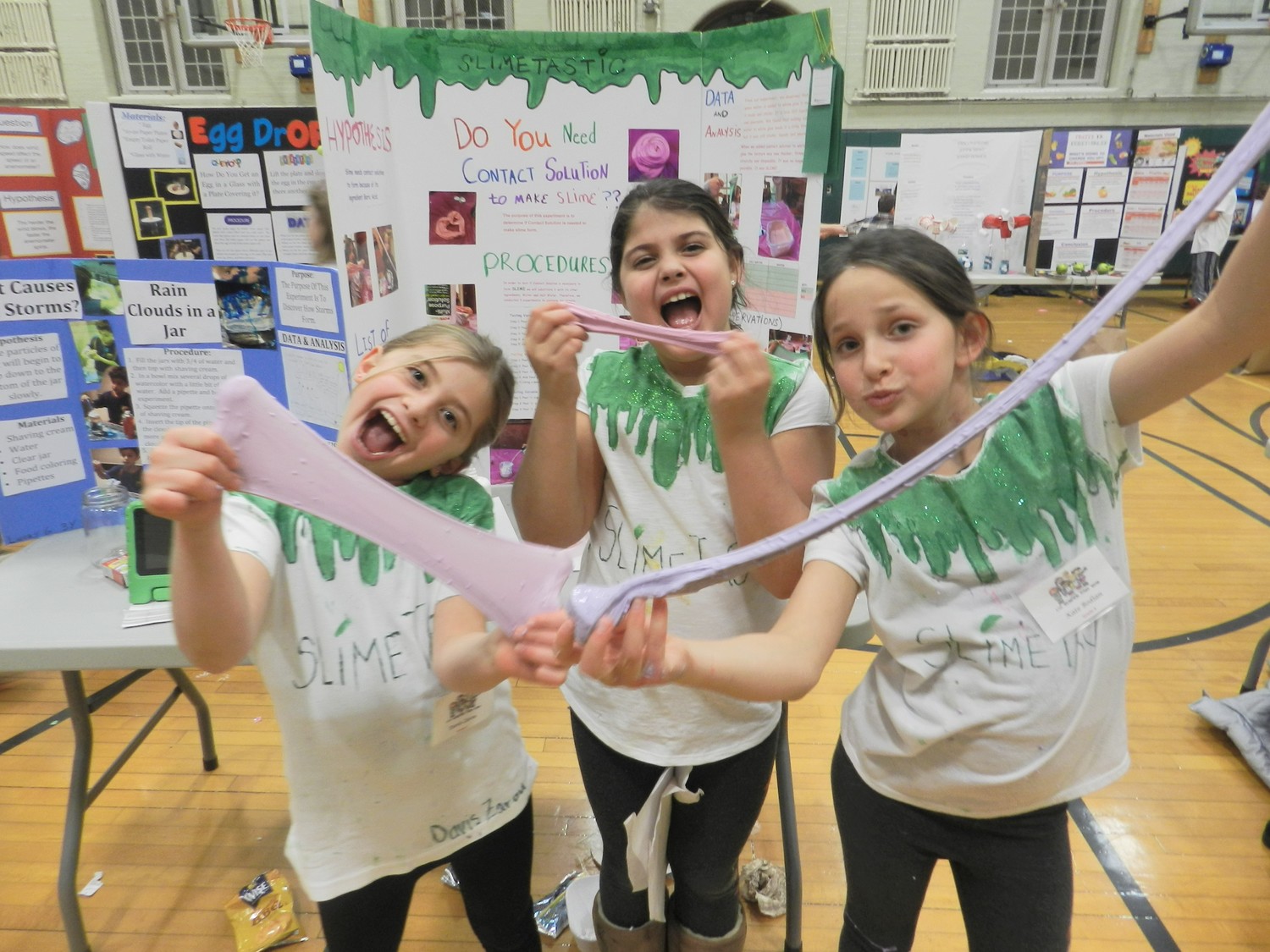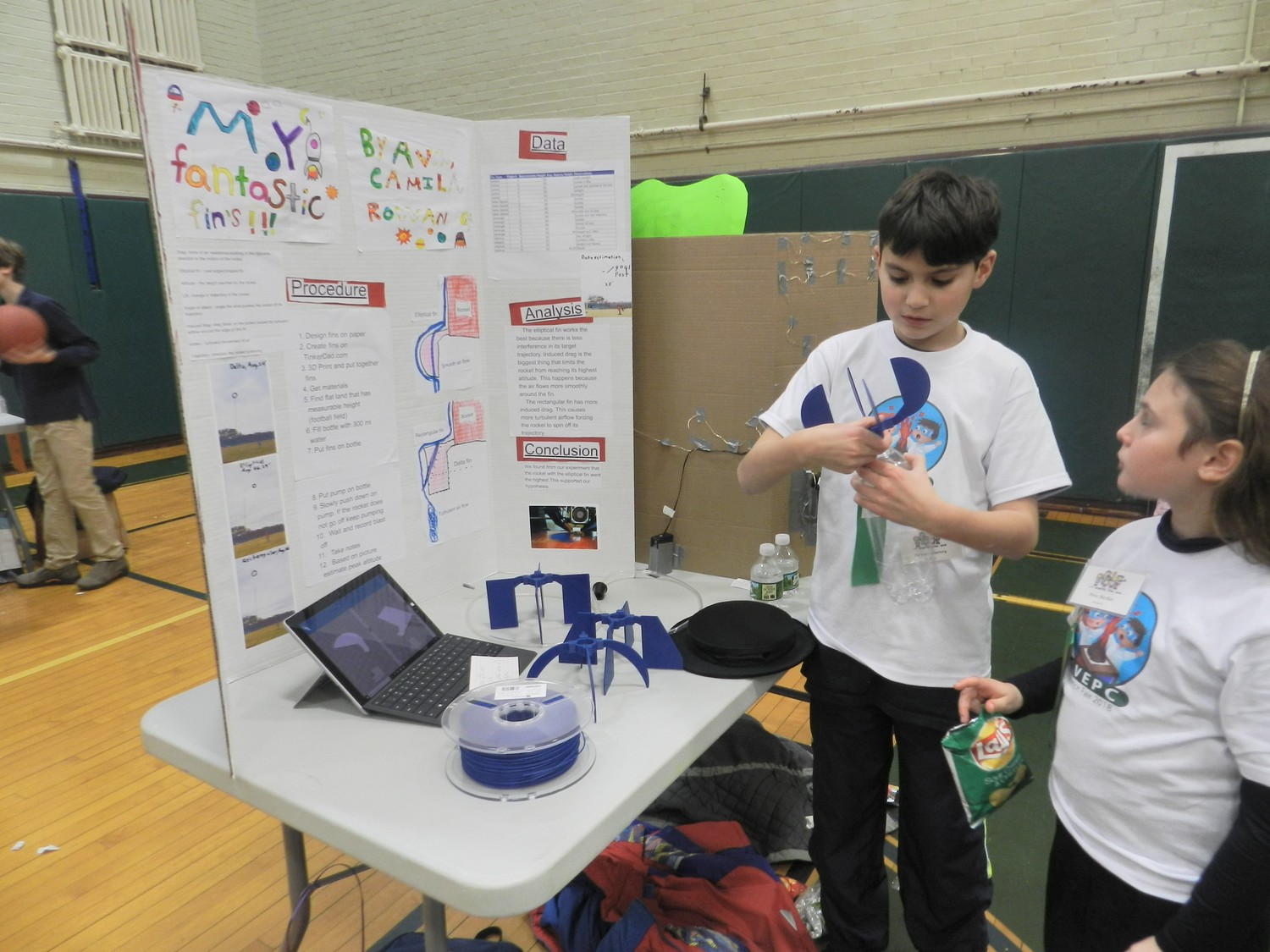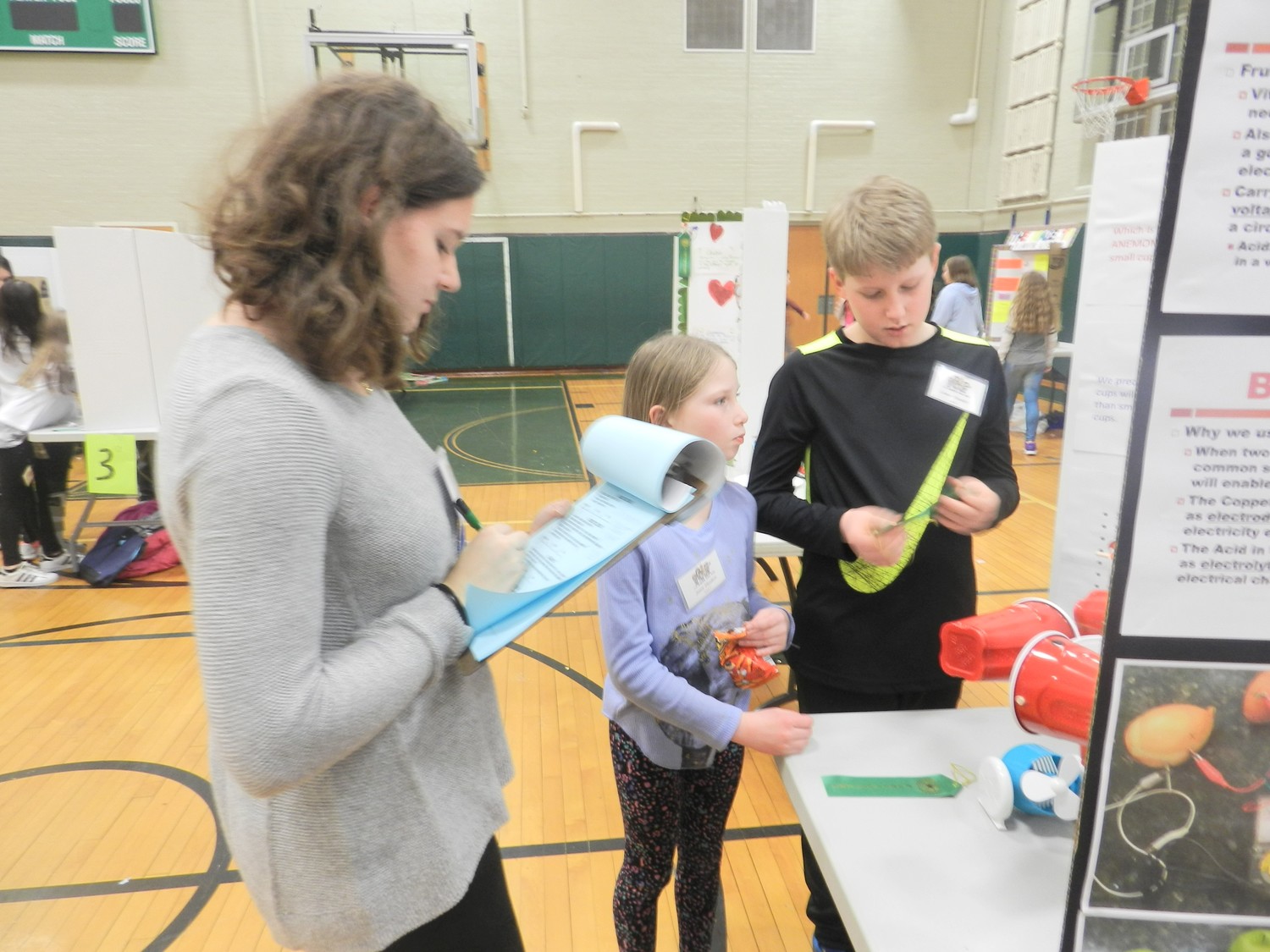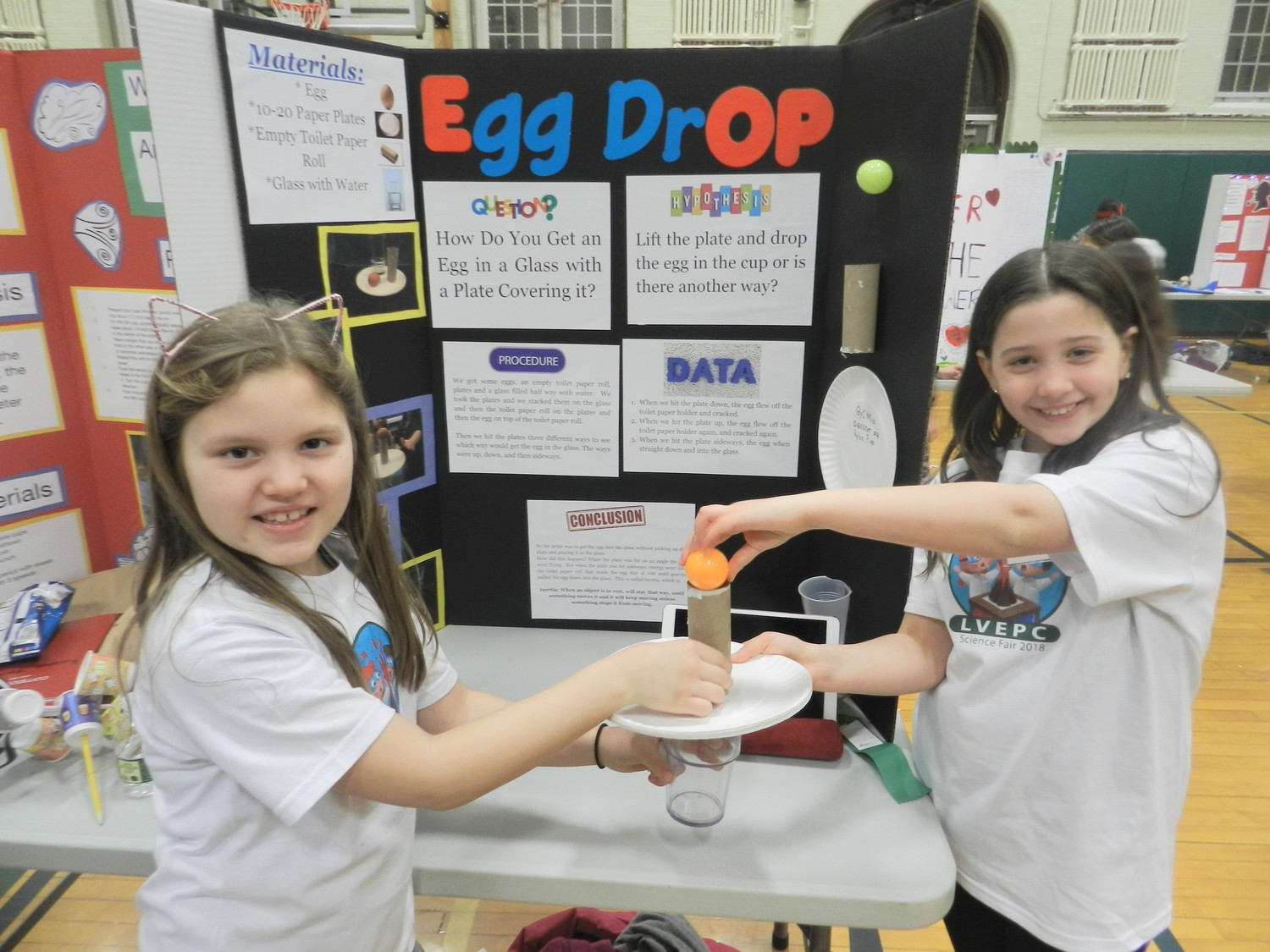Locust Valley’s mad scientists stun in annual fair
The gymnasium of Locust Valley Intermediate was a buzz with activity for the school’s annual science fair on Feb. 15. Students in third, fourth and fifth grade showed the best of their skills through various science projects, which were judged by students in the high school’s research program.
“When I first came here I thought ‘wouldn’t it be cool to have students from the high school, who are usually being judged, come down and judge the younger kids,’” said Chris Hoppner, Locust Valley high school’s science research coordinator. “It makes it feel familial.”
The science fair is sponsored by LVI’s parent council. “It’s a fun event for the kids that are interested in doing it,” said parent council president Jennifer Dardzinski. “It’s very incredible and creative that they could come up with these ideas and then are able to explain it.”
The students presented a variety of projects that addressed scientific notions, such as inertia, osmosis, electricity, and chemical reactions. After the high schoolers had a chance to assess each one, they compared scores and crowned one project from each grade with first place.
The winners in third grade were Taylor Zarou and Charlie Posillico for their project “The Effects of Sugar on Teeth.” Fourth graders Camila Acosta, Ava Becker, and Rowan Shenoy clinched first place with their project “How Does the Shape of Fins Affect the Trajectory?” First prize in fifth grade went to Jack Hansen, Ashton Klar, and Will Souther, whose project was called “Where Does a Bouncing Ball’s Energy Go?”
Junior research student Kyra Schmeizer, who judged the event, was stunned by the smarts of the younger students. “I am really impressed by how much they know about their topics and how they came up with their experiments because I don’t think I could’ve done that at their age,” she said.
Schmeizer added that it was important to get children interested in science early on, “that way when they’re in high school they can expand on what they’re doing now.”
Seeing such prowess at the elementary level, Hoppner said, gives him hope. “It’s hope for the future to see that we still have students willing to go through the scientific process, and put extra time into science work,” Hoppner said.
The young scientists will attend Locust Valley’s senior research symposium at the end of May to present their projects alongside the high school students.













